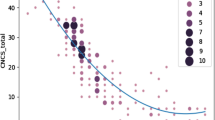Objectives. To identify the features of the recovery of consciousness and higher mental function in children aged 6–17 years during the first four months after severe craniocerebral trauma (SCCT). Materials and methods. A total of 17 patients aged 6–17 years were studied after SCCT (Glasgow Coma Scale ≤8). The dynamics of the recovery of consciousness were followed using the Coma Recovery Scale (CRS). Depending on the level of recovery of consciousness at four months post-trauma, children were divided into three groups: 1) seven children with complete recovery of consciousness, who achieved high levels of voluntary control sufficient for them to perform the Luriya Neuropsychological Battery underwent full neuropsychological investigation; 2) six children able to carry out simple instructions and provide Yes/No responses to questions were assessed using an adapted version of the neuropsychological diagnosis tests; 3) four children, because of low levels of consciousness and voluntary activity, were not competent for neuropsychological examination, so were assessed only on neurobehavioral scales. Results and conclusions. The most frequently encountered disorders in the early period of recovery after SCCT were impairments to executive functions and memory, along with neurodynamic mental activity. the slowest changes in the recovery of mental activity in children occurred in those with damage mainly to the frontal areas of the brain. Slow recovery of consciousness was generally accompanied by more profound primary impairments to visual object gnosis, speech, and executive functions, which were mostly seen in patients able to undergo neuropsychological investigations. Marked improvements in mental activity were combined with early appearance of behavioral reactions and rapid increases in changes in behavior.
Similar content being viewed by others
References
E. D. Khomskaya, Neuropsychology, Piter, St. Petersburg (2005).
L. V. Kulikova (ed.), The Psychology of Consciousness, Piter, St. Petersburg (2001).
Yu. V. Mikadze, “Methodological principles of the psychological analysis of behavioral impairments,” Vestn. Mosk. Univ., Ser. 14, Psikhologiya, 2, 12–17 (1991).
A. P. Luriya, Higher Cortical Functions in Humans, Piter, St. Petersburg (2008).
S. Laureys and G. Tononi, The Neurology of Consciousness, Elsevier Academic Press, Amsterdam (2009).
T. A. Dobrokhotova, Neuropsychiatry, Novosibirsk (2006).
E. A. Kondrat’eva and I. V. Yakovenko, The Vegetative State (etiology, pathogenesis, diagnosis, and treatment), Polenov RNKhI, St. Petersburg (2014).
J. Giacino, S. Ashwal, N. Childs, et al., “The minimally conscious state: Definition and diagnostic criteria,” Neurology, 58, No. 3, 349–353 (2002), https://doi.org/10.1212/wnl.58.3.349.
J. Giacino, K. Kalmar, and J. Whyte, “The JFK Coma Recovery Scale-Revised: Measurement characteristics and diagnostic utility,” Arch. Phys. Med. Rehabil., 85, No. 12, 2020–2029 (2004), https://doi.org/10.1016/j.apmr.2004.02.033.
T. V. Akhutina and O. B. Inshakova (eds.), Neuropsychological Diagnosis: Studies of Writing and Reading in Young Schoolchildren, Sekachev (2008).
O. A. Krotkova, T. A. Karaseva, and V. L. Naidin, Quantitative Assessment of Memory Impairments in Neurological and Neurosurgical Patients, USSR Ministry of Health, Moscow (1983).
Yu. V. Mikadze and N. K. Korsakova, Neuropsychological Diagnosis and Correction in Schoolchildren, Inteltekh, Moscow (1994).
Yu. V. Mikadze, Pediatric Neuropsychology, Piter, St. Petersburg (2008).
Yu. V. Mikadze, “Some methodological questions on quantitative and qualitative analysis in neuropsychological diagnosis,” Vestn. Mosk. Univ., Ser. 14, Psikhologiya, 2, 96–103 (2012).
L. Ewing-Cobbs, H. Levin, J. Fletcher, et al., “The Children’s Orientation and Amnesia Test: relationship to severity of acute head injury and to recovery of memory,” Neurosurgery, 27, No. 5, 683–691 (1990), https://doi.org/10.1227/00006123-199011000-00003.
E. V. Fufaeva, V. I. Luk’yanov, V. I. Bykova, et al., “Early neuropsychological features in children with severe craniocerebral trauma,” Neirokhirurg. Nevrol. Detsk. Vozr., 34, No. 4, 61–75 (2012).
C. Hagen, D. Malkmus, and P. Durham, “Levels of cognitive functioning,” in: Rehabilitation of the Head Injured Adult: Comprehensive Physical Management, C. A. Downey and Professional Staff Association of Rancho Los Amigos Hospital (eds.), Rancho Los Amigos Hospital Inc. (1987).
Author information
Authors and Affiliations
Corresponding author
Additional information
Translated from Zhurnal Nevrologii i Psikhiatrii imeni S. S. Korsakova, Vol. 117, No. 11, Iss. 2, Pediatric Neurology and Psychiatry, pp. 33–40, November, 2017.
Rights and permissions
About this article
Cite this article
Fufaeva, E.V., Mikadze, Y.V. & Lukyanov, V.I. Neuropsychological Diagnosis of Decreased Consciousness after Severe Craniocerebral Trauma in Children. Neurosci Behav Physi 49, 252–258 (2019). https://doi.org/10.1007/s11055-019-00729-9
Published:
Issue Date:
DOI: https://doi.org/10.1007/s11055-019-00729-9




